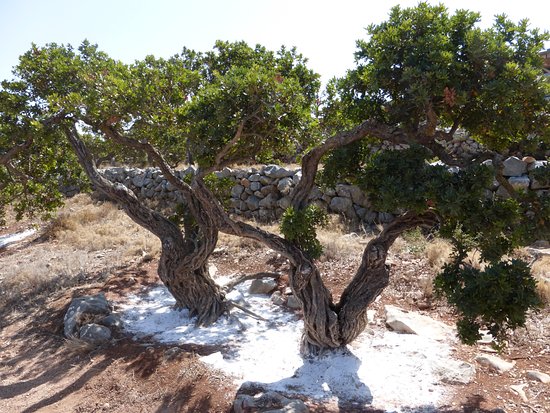Mastic Tree are attractive and possess large and evergreen leaves. Moreover, the mastic tree is a widely growing plant in Mediterranean areas. This Mastic is capable of tolerating rocky and arid conditions. Significantly, these mastic trees are widely used in making various types of crafts in the old times. The various parts of this tree are used in cooking delicious recipes even nowadays. Most people use it in making mouth-watering ice creams. Pistacia lentiscus grows to its fullest in the spring season.
Scientific Name: The scientific name of the mastic tree is Pistacia lentiscus.
Common Name: This fruit-bearing plant is commonly known as a mastic tree.
Plant kind: This beautiful plant is a slow-growing shrub along with large leaves.
Average height: The normal size of this plant is 15-25 feet high and 20-30 feet in width.
Hardiness zone: Its Hardy zone range from USDA 9-11.
Ideal Time to Grow:
You can grow it for perfect development in the spring season.
PH of Soil: The required Soil PH for mastic tree is Alkaline.
Mastic Tree Care: Growing plant is interesting but it needs some effort. The better you take care of this plant, the better it will grow. The plant is used in various medicine, cooking delicious food items and also used in the binding of the books. Because it produces a sticky gum-like fluid that helps you to bind books. Significantly, it is very important to take proper care.
Light: Pistachio lentiscus thrives to grow in bright sunlight. If you plant this tree in such a location that receives a good amount of sunlight then it will produce gum in excessive amounts. Especially the sunlight of morning and light in the afternoon is very important for mastic trees.
Soil: The best soil for this fruit plant is sandy and dry soil Most importantly this tree can grow in any condition. But it is very crucial to make sure that for the healthy growth of this plant soil should be well-drained. Another basic thing about this mastic tree is its soil PH. Always plant in alkaline-rich soils.
Water: Once your tree gets fully developed, it doesn’t require a high quantity of water. But in its first blooming season provide it with a good amount of water.
Temperature and Humidity:
If you are living in such regions where it is not wrong to say “But it’s a dry heat” then a plant is ideal for your lawns and gardens. It is very famous nowadays in Mexico’s arid areas. Thus mastic trees can survive in low humidity and high temperature.
Fertilizer: Providing a dose of all-purpose fertilizer or slow-release fertilizer on yearly basis is perfect for the maintenance of this tree. The accurate time to fertilize this plant is the spring season.
Frequently Asked Questions:
1. What is the family name of the mastic tree?
The mastic tree is a beautiful member of the Anacardiaceae family.
2. Is Pistacia lentiscus has a unique colour combination?
No, mastic tree grows in non-clearly visible green colour.
3. Are the fruit of the mastic tree edible or not?
Interestingly, the red juicy fruit that the mastic tree produces is not edible for human beings but are the source of food for wildlife animals, birds etc.
4. What is the origin of Pistacia lentiscus?
These trees were first time found in the Mediterranean regions.
Conclusion:
In final words, we want to recommend this unique and low maintenance tree to everyone. A mastic tree doesn’t require a lot of effort to become an ideal tree. More, you do not need to provide it with water regularly once it gets fully developed. So this plant is ideal for all those people who want to grow a slow-growing shrub because it grows slowly and never spread earlier.

